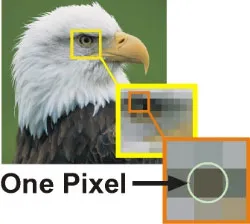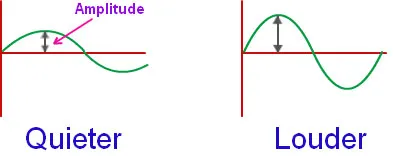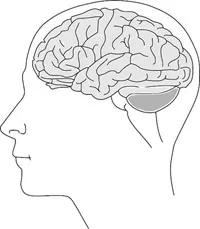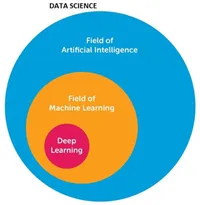
eBook - ePub
Demystifying Artificial intelligence
Simplified AI and Machine Learning concepts for Everyone (English Edition)
Prashant Kikani
This is a test
Share book
- English
- ePUB (mobile friendly)
- Available on iOS & Android
eBook - ePub
Demystifying Artificial intelligence
Simplified AI and Machine Learning concepts for Everyone (English Edition)
Prashant Kikani
Book details
Book preview
Table of contents
Citations
About This Book
Learn AI & Machine Learning from the first principles. Key Features
- Explore how different industries are using AI and ML for diverse use-cases.
- Learn core concepts of Data Science, Machine Learning, Deep Learning and NLP in an easy and intuitive manner.
- Cutting-edge coverage on use of ML for business products and services.
- Explore how different companies are monetizing AI and ML technologies.
- Learn how you can start your own journey in the AI field from scratch.
-
Description
AI and machine learning (ML) are probably the most fascinating technologies of the 21st century. AI is literally in every industry now. From medical to climate change, education to sport, finance to entertainment, AI is disrupting every industry as we know. So, the basic knowledge of AI/ML becomes mandatory for everyone. This book is your first step to start the journey in this field. Along with basic concepts of fields, like machine learning, deep learning and NLP, we will also explore how big companies are using these technologies to deliver greater user experience and earning millions of dollars in profit. Also, we will see how the owners of small- or medium-sized businesses can leverage and integrate these technologies with their products and services. Leveraging AI and ML can become that competitive moat which can differentiate the product from others. In this book, you will learn the root concepts of AI/ML and how these inanimate machines can actually become smarter than the humans at a few tasks, and how companies are using AI and how you can leverage AI to earn profits. What you will learn
- Core concepts of data science, machine learning, deep learning and NLP in simple and intuitive words
- How you can leverage and integrate AI technologies in your business to differentiate your product in the market.
- The limitations of traditional non-tech businesses and how AI can bridge those gaps to increase revenues and decrease costs.
- How AI can help companies in launching new products, improving existing ones and automating mundane processes.
- Explore how big tech companies are using AI to automate different tasks and providing unique product experiences to their users.
-
Who this book is for
This book is for anyone who is curious about this fascinating technology and how it really works at its core. It is also beneficial to those who want to start their career in AI/ ML. Table of Contents
1.Introduction
2. Going deeper in ML concepts
3. Business perspective of AI
4. How to get started and pitfalls to avoid About the Authors
Prashant Kikani is an experienced data scientist, who ranks in the top 1% worldwide in competitions and kernels on Kaggle which is the world's largest community and platform for data science and machine learning. As part of his day-to-day work, he is working on solving some of the hardest problems for the human kind, like language translation using state-of-the-art deep learning-based NLP models and infusion of knowledge graphs in NLP models. He is one of the youngest students to achieve the Master title on the Kaggle kernel platform. Also, he has worked on other deep learning sub-fields like computer vision via Kaggle competitions. His interests lie in AI/ML and deep learning, and teaching others what he has learned in a very simple and intuitive manner. This book is part of his interest to share his knowledge in the simplest possible manner with everyone so that everyone they can learn about this fascinating technology called AI! Blog links: http://prashantkikani.com LinkedIn Profile: //https://www.linkedin.com/in/prashant-kikani/
Frequently asked questions
How do I cancel my subscription?
Can/how do I download books?
At the moment all of our mobile-responsive ePub books are available to download via the app. Most of our PDFs are also available to download and we're working on making the final remaining ones downloadable now. Learn more here.
What is the difference between the pricing plans?
Both plans give you full access to the library and all of Perlego’s features. The only differences are the price and subscription period: With the annual plan you’ll save around 30% compared to 12 months on the monthly plan.
What is Perlego?
We are an online textbook subscription service, where you can get access to an entire online library for less than the price of a single book per month. With over 1 million books across 1000+ topics, we’ve got you covered! Learn more here.
Do you support text-to-speech?
Look out for the read-aloud symbol on your next book to see if you can listen to it. The read-aloud tool reads text aloud for you, highlighting the text as it is being read. You can pause it, speed it up and slow it down. Learn more here.
Is Demystifying Artificial intelligence an online PDF/ePUB?
Yes, you can access Demystifying Artificial intelligence by Prashant Kikani in PDF and/or ePUB format, as well as other popular books in Ciencia de la computación & Visión y reconocimiento de patrones computacionales. We have over one million books available in our catalogue for you to explore.
Information
CHAPTER 1
Introduction
In this introductory chapter, we will explore some of the basic terms related to artificial intelligence (AI) such as machine learning, deep learning, data science, neural networks, etc.
After reading this, you will know what “the field” really is, what each term means, and how each part connects to the other. We will take a look at all this by keeping it short and simple.
Structure
In this chapter, we will cover the following topics:
- What is data?
- How to convert images, text, and audio data into numbers?
- What is AI?
- Subfields of AI
- Types of AI
- What is ML?
- What is DL?
- What are artificial neural networks and how are they built?
- What is “deep” in deep learning?
- Advantages/limitations of DL
- What is data science?
- Why do we need AI?
- Why does automation matter?
- Machine learning and maths
- Why is ML so dependent on maths?
Objectives
After studying this chapter, you should be able to:
- Learn about various terms related to AI and their correlation
- Have a general idea about what an AI system might look like
- Understand how machines can do something better than humans and what makes them so much better at some tasks
What is data?
Before we start discussing AI and machine learning, let’s first discuss data.
Data is the main reason why AI and ML algorithms/models are able to learn anything meaningful. It plays a crucial role in the performance of any ML model. In general, data can mean anything like tables in spreadsheets, images, videos, audios, text, track records, etc. We use data to teach machines/computers, but, guess what, machines can only understand numbers. Other than numbers, it can’t understand anything. Data is the crux of every ML model, and data is the only thing that the ML model gets from us. Quality and quantity of data are very important as that’s what the model uses to learn something. As long as we can somehow convert something into numbers, it “becomes” data for the machine learning models.
(By the way, a model is just an algorithm that learns to capture patterns in data. Basically, we teach models to make predictions in the future.)
It is okay for spreadsheet tables as they already have numbers, but what about images, audios, videos, or text? They are not numbers. Then, how can a machine learn from them?
Computers only understand numbers; nothing more or less. They operate in 0 and 1. So, we need to communicate with computers in numbers because that’s what they understand.
Well, if the data is not in numbers, we convert it into numbers.
How? Let’s see.
1. Text
Text is made from different words. We give each word a unique number. Let’s say, there are a total of 80,000 unique English words in our test dataset. We give each of them a unique number. So, the sentence “machine learning is very easy” becomes something like “19768 45734 3 2349 459”. Now, machines/computers can read this sentence. This process is called encoding in technical terms. Did you get the idea? We replaced each word with its corresponding number to convert text into numbers. While doing this, we maintain the order of the words.
2. Images
Actually, an image is already in the number format. When we capture a photo or shoot a video from a mobile phone or camera, it’s stored in numbers in memory. So, unlike text data, there is no need to exclusively convert images into numbers.
An image is nothing but a group of pixels in a certain order.
A pixel is the smallest unit of an image. Every pixel has a number associated with it. So, in a nutshell, an image is nothing but thousands of numbers in a certain order. For example, let’s take a look at the following image:

Figure 1.1: How a pixel looks like if we zoom in a photo
If we zoom the image to some extent, we can see each pixel. You may have seen these types of pixels in your mobile or camera. Each number in a pixel represents how much of these fundamental colors (i.e. Red, Green, and Blue) contribute to a particular pixel.
3. Audio
The audio or sound is transmitted by waves in the air. We convert these waves into numbers. How? It’s a bit technical, but in simple terms, we store something called the amplitude of the waves at every small interval of time.
A sound wave becomes a series of numbers. We just need to represent every voice signal with a unique chain of numbers. So, we picked the amplitude values for the wave at every small time interval
The essence of voice recognition is that no matter who speaks the word, the series of numbers almost always remains more or less the same for that particular word.

Figure 1.2: Quiet and loud sound’s amplitudes
For example, let’s take the word hello.
No matter who speaks the word hello, whether it’s a male from Asia, or a female from Australia, or a kid from America, amplitudes for the word hello for each of them will remain more or less similar. That’s what a machine learns in speech recognition. The machine captures the same pattern of numbers to detect the spoken word. Converting all these types of data into numbers comes under something called the data preprocessing part.
We play around a lot with data as data is the thing that makes or breaks the performance of our AI/ML model.
In machine learning, it’s all about data. In real-world projects, most of the work goes into making the data right. In preprocessing, along with converting data into the number format, we also do multiple things like:
- Filling missing values
- Feature engineering
- Scaling/normalizing
- Augmentation
We will read about this in the upcoming chapters. Some well-known open-source datasets for images are ImageNet and Google’s open images. ImageNet has more than 14M images that were created by more than 50k people around the world.
Because of these huge datasets, the progress of AI and machine learning fields is skyrocketing. If you want to get hands-on experience on Python coding for machine learning, take a look into the following Python notebook: Introduction to Basic Python Libraries for ML (https://github.com/bpbpublications/Demystifying-Artificial-Intelligence/blob/main/Chapter01/introduction-to-basic-python-libraries-for-ml.ipynb).
In this Python notebook, I have covered basic Python libraries which every professional data scientist and ML engineer uses. So, in machine learning, data is made from numbers. No matter if it’s text, audio, or image, we can still convert them into numbers.
What is artificial intelligence (AI)?
AI is a very broad field in science whose ultimate goal is to make computers/machines to make decisions on their own in tasks which require intelligence and reasoning.
In other terms, as you might have guessed, to create intelligence artificially! We know one form of intelligence that is our very own biological brain; though, we don’t quite understand how it operates, takes decisions, and stores information.

Figure 1.3: Human brain, a mystery yet to be solved
The earliest definition of AI from 1950 is any task performed by a computer program or a machine that if a human carried out the same activity, we would say the human had to apply intelligence to accomplish the task. Another way to describe intelligence according to Francois Chollet is the ability to understand something from a partial description.
How minimalist this description can be is a measure of intelligence. As of now, AI is made of multiple fields like computer science, neuroscience, mathematics, statistics, etc. That doesn’t mean you need to understand all these fields before entering into AI. Almost anyone can learn about AI with almost no prerequisites.
In fact, that’s what this place is about; to make AI simple enough so that everyone can understand it at its core. Some popular fields that fully/partially fall under AI are as follows:
- Machine learning (ML)
- Deep learning (DL)
- Computer vision
- Natural language processing (NLP)
- Robotics
- Knowledge representation
- Logic
- Reasoning
- Problem solving
- Creativity
There are some controversies/confusion about which field falls under which. The only thing is the one that I have mentioned in the diagram. All we know is that they all fall under the AI field:

Figure 1.4: Hierarchy of the artificial intelligence field
Keep in mind that AI is a very broad term.
As it’s a comparatively new field, many people confuse AI with terms like machine learning, deep learning, robotics, Internet of Things (IoT), etc. Actually, all of them are subfields of AI. Like all other subfields, machine learning (ML) and deep learning (DL) both come within AI. When we hear ‘AI’, it just means that it’s something related to making a machine make intelligent decisions on its own, almost nothing more or less than that.
The goal of AI is to enable machines to make intelligent decisions on their own.
To achieve this, we need to teach machines how to learn from data as machines are not living objects. They cannot learn on their own. We have already seen what data is. We use this type of data to teach machine-specific task...